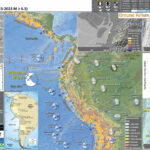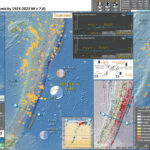This morning my time there was a magnitude M 6.8 earthquake in Ecuador. https://earthquake.usgs.gov/earthquakes/eventpage/pt23077000/executive I got a notification that there would not be a tsunami to reach the west coast of the USA. Because of the depth and magnitude, there…
Earthquake Report: M 7.0 Kermadec
Tonight (my time) there was a tsunami notification for a magnitude M 7.1 earthquake along the Kermadec subduction zone. https://earthquake.usgs.gov/earthquakes/eventpage/us7000jkbd/executive My cat is not letting me complete this report. So, I will add some more stuff over the next few…


